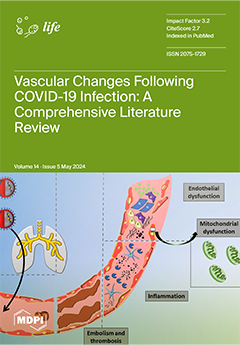Objectives—Metallic elements and fibrin clot properties have been linked to stroke. We examined metallic and nonmetallic elements, fibrin clot lysis time (CLT), and maximum absorbance (Abs
max) in relation to ischemic stroke. Design—A case–control study of ischemic stroke patients vs. healthy individuals. Subjects and Methods—Plasma and serum were collected from 260 ischemic stroke patients (45.0% women; age, 68 ± 12 years) and 291 healthy controls (59.7% women; age, 50 ± 17 years). Fibrin CLT and Abs
max were measured using a validated turbidimetric assay. Serum elements were quantified by inductively coupled plasma mass spectrometry (ICP-MS) and optical emission spectrometry (ICP-OES). Data were analyzed by bivariate correlations and multiple or logistic regression. Results—In female stroke patients, copper, lithium, and aluminum were significantly lower compared with controls; in male stroke patients, potassium was lower, and beryllium was elevated. In female and male stroke patients, iron, zinc, nickel, calcium, magnesium, sodium, and silicon were significantly lower, while strontium was elevated. Positive correlations between fibrin clot properties and metals, observed in healthy controls, were lost in ischemic stroke patients. In multivariate regression analysis, fibrin CLT and/or Abs
max was associated with zinc, calcium, potassium, beryllium, and silicon in stroke patients and with sodium, potassium, beryllium, and aluminum in controls. In logistic regression analysis, stroke was independently associated with lithium, nickel, beryllium, strontium, boron, and silicon and with sodium, potassium, calcium, and aluminum but not with fibrin CLT/Abs
max. Conclusions—Various elements were associated with fibrin clot properties and the risk of ischemic stroke. Lithium, sodium, calcium, and aluminum abrogated the association of fibrin clot properties with ischemic stroke.
Full article






